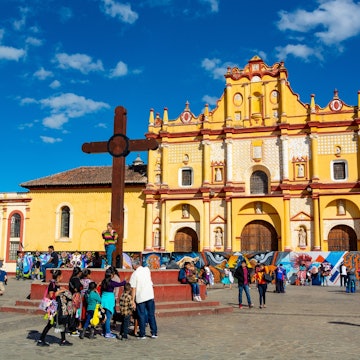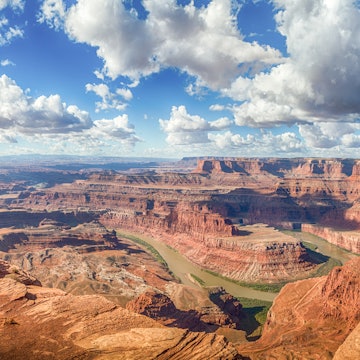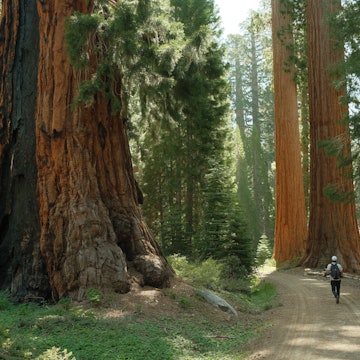
I rafted through the Grand Canyon and here's what I discovered

Jul 6, 2022 • 10 min read
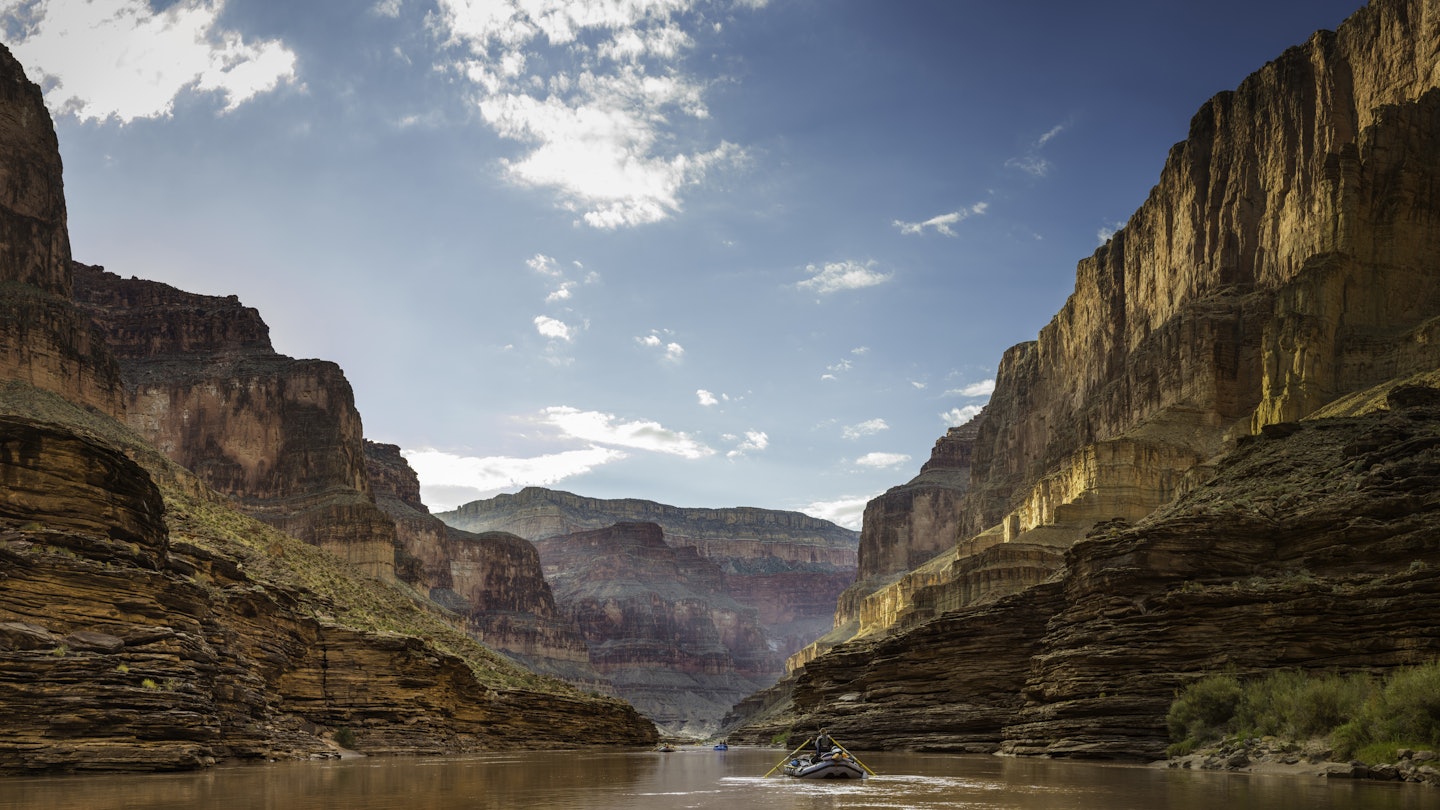
Writer Amy Balfour signed up for a long-awaited rafting trip down the Colorado River. Here's how it went – and how you can do it too © Draper White/Getty Images
No one warns you about "The Groover," and maybe it’s better that they don’t. If you join a commercial rafting trip on the Colorado River through the Grand Canyon, you’ll become intimately familiar with this metal-sided chamber of horrors that passes for a porta-potty, but more on that later...
The Groover was one of several surprises on my 8-day adventure, which I completed in June 2022. Ahead of my trip, my river outfitter, Grand Canyon Expeditions, emailed me a helpful pre-trip checklist, but I discovered that planning a trip along the Colorado River can be almost as opaque as the waters themselves. Here’s what to expect if you decide to paddle through the Grand Canyon yourself.
Rafters' tip: If your schedule is flexible, you might still be able to snag a reservation with one of the canyon’s rafting outfitters in 2022 (the commercial season runs from April through October).
Why I chose a commercial rafting trip to the Grand Canyon
Rafting the Grand Canyon had been on my bucket list for decades. I’d visited the canyon numerous times, and its beauty and immensity always recharged my psyche like no other place. I’d hiked from the South Rim to the Colorado River three times, camped at Bright Angel Campground, and bunked in the hiker’s dorm at Phantom Ranch on two separate trips, as well as exploring the North Rim. But rafting? I’d never found the time, but 2022 was finally my year.
Grand Canyon National Park allows two types of recreational boating trips through the canyon: commercial and noncommercial. The park has approved 15 river concessioners to guide commercial trips on the river, while noncommercial trips – also called "private trips" – are self-guided. Guiding your own trip is challenging and often dangerous, and it’s not recommended for those unfamiliar with the river.
Why did I choose commercial over private? Convenience, first and foremost. My undergrad college, Washington & Lee University, organizes more than a dozen educational adventures annually for alumni, including a Grand Canyon rafting trip about once every five years. It's wildly popular; a geology professor comes along, and their lectures add scientific context to the natural beauty on all sides.

Picking the right boat for a Colorado River trip
If you’re considering a commercial trip, your biggest decision will be which type of boat to go for. The vessels used for commercial trips include handcrafted dories (shallow-draft wooden boats), oar-powered rafts, paddle-steered rafts and large motorized pontoon rafts. The latter, as used on my trip, are the only boats that can travel the canyon’s entire 277-mile course in a week.
For an overview of the 15 outfitters and their trips, check out Advantage Grand Canyon. This free reservation service, which earns money through referral fees, zeros in on trips that match your interests and timeframe.

Who can handle the canyon?
You don’t have to be rich, ripped or even a grown-up to raft the canyon. In fact, when it comes to bucket list adventures, a Grand Canyon rafting trip is one of the most “doable” experiences for the average traveler.
Kids as young as eight are allowed on many motorized rafting trips, while for oar-steered and paddling trips, the minimum age rises to 10 or 12 years, and the minimum age for dories is 12 years. There are no upper age limits; my trip, which had 23 passengers, included teenagers in high school as well as travelers in their 70s.
Whole-length canyon trips typically run more than 160 sets of rapids on the Colorado River, rated from Class 1 through 10, which differs from the Class I to Class V rating typically used to classify rapids on American whitewater. Nearly 20 of these sets of rapids drop 15ft or more, and the show-stopping Lava Falls drops 37ft.
Learn about Native cultures and Tribal lands on this Arizona road trip
Add-on hikes in the Grand Canyon
Most trips include daytime hikes into side canyons. These are typically no more than 2 miles out and back, but the trails can be steep and hot. Several travelers on my trip skipped the longer hikes, and this was no problem for the operators. As well as paddling and walking, guests also help load and unload every traveler’s dry bags for overnight stops, which definitely gives your arms a workout.
The key requirements for rafting the Grand Canyon? A love of adventure and a willingness to embrace the challenges of the canyon, which is affectionately known as Riverworld.
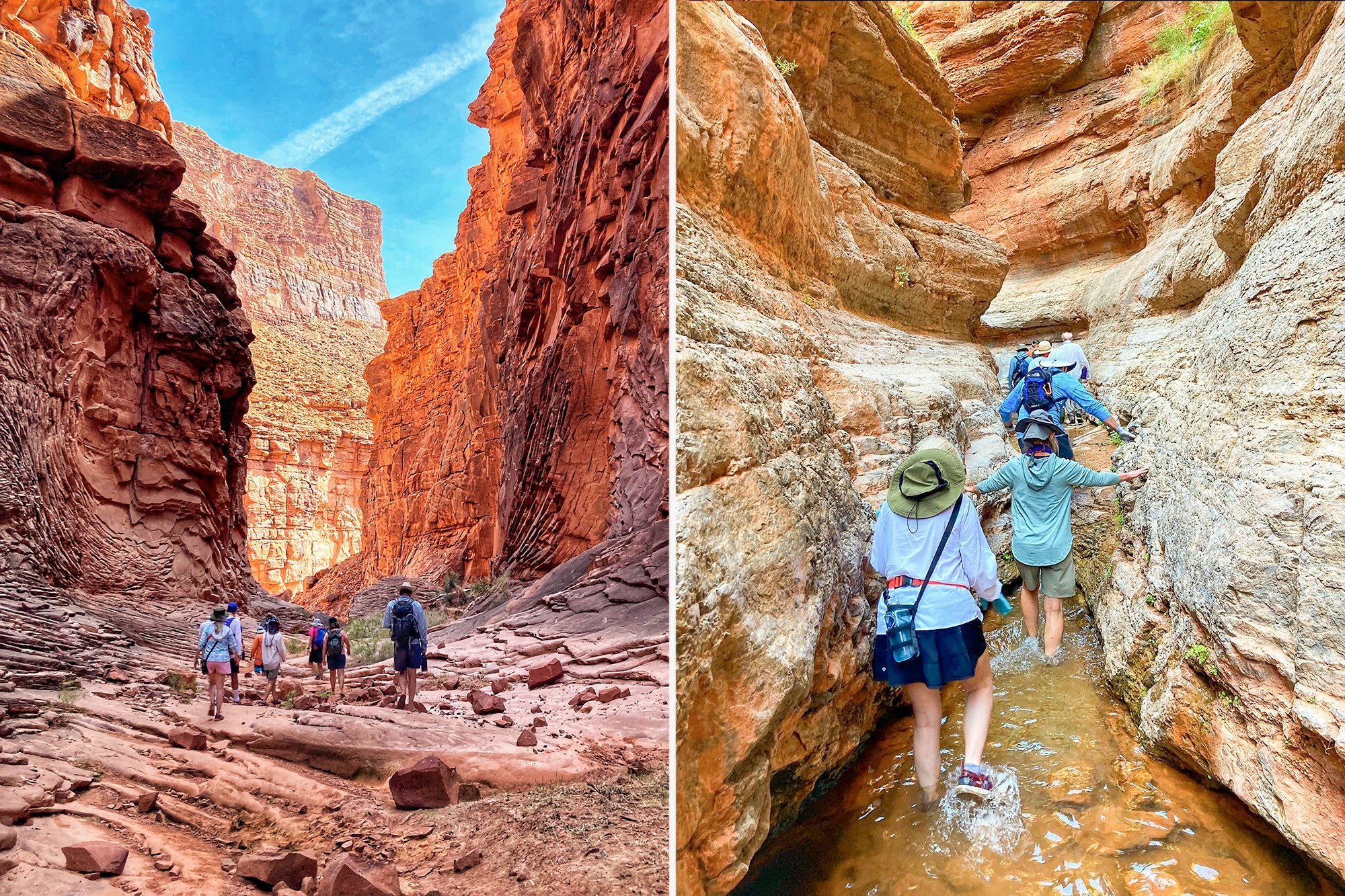
Unexpected items that you should pack
Based on my own experiences and an informal survey of my fellow rafters, there are several items of unexpected importance that you should pack.
My first recommendation is a rain suit, comprising a waterproof jacket and pants. Lees Ferry is 15 miles downriver from Glen Canyon Dam, and the water powering from the dam is snowmelt from the Rockies, so it's cold, hovering around 50 degrees. By the afternoon, some of my wave-splashed raftmates were visibly shivering, even though canyon temperatures hovered near 100 degrees.
Another must-bring is a sarong – and not just for women. A sarong dipped in the cold river waters can be draped over your legs on the raft, protecting them from the sun and cooling you down while floating along calm stretches of the Colorado. Onshore, a sarong doubles as a privacy curtain. It can also be used as an impromptu yoga mat and as a light sheet at night if it’s too warm to climb into your sleeping bag.
Also consider mixing electrolytes into your water. Commercially-available electrolytes include minerals such as sodium, potassium and magnesium that help regulate fluid levels in your body. I found they gave me a much-needed boost of energy on hot and strenuous days.
Finally, buy quality carabiners to keep your water bottle and your day pack attached to the boat. I bought a few small, low-grade carabiners from a big box store, and they broke just about every time I tried clipping them to the security rope on the raft.

The thing not to bring: modesty
Commercial rafts land on rock-dotted sandbars for lunch breaks, day hikes and bathroom pit stops. One surprise of the trip? We were not allowed to “take a leak” onshore; river runners must pee in the Colorado River. If every one of the 27,000 boaters who visit annually urinated in the sand, a malodorous litter box situation would ensue.
How did this work in practice? After our raft was secured, men walked a short distance in one direction, while women walked in the other. The recommended stance for women? Crouching in the shallows and dropping our drawers. We couldn’t walk too far into the river because of the powerful current, but the current did ensure that our liquid waste was quickly dispersed.
At night we were given plastic “pee buckets.” We placed these vessels a few steps from our cots, pouring the contents into the river in the morning, like a 21st-century version of the Wild West chamber pot. Ladies, sleep in a short sundress; it makes the process easier.
From stargazing to ghost towns, the 10 best places to visit in Arizona
Now back to the Groover. Reserved for “number twos,” the Groover is a metal box topped with a toilet seat and lid. According to canyon lore, the name stems from the days when the waste box was a small ammo can that wore grooves into the legs and backsides of anyone who sat upon it.
Also called the “loo with a view,” the Groover is portable. Our crew stashed ours in a scenic but secluded spot a short walk from the camping area. Two rolls of toilet paper, tucked into a plastic baggie and propped on a supply canister, doubled as "The Key" – if the baggie was missing, the Groover was occupied. And yes, standing in the Groover line is awkward, but I had some memorable conversations while waiting my turn.
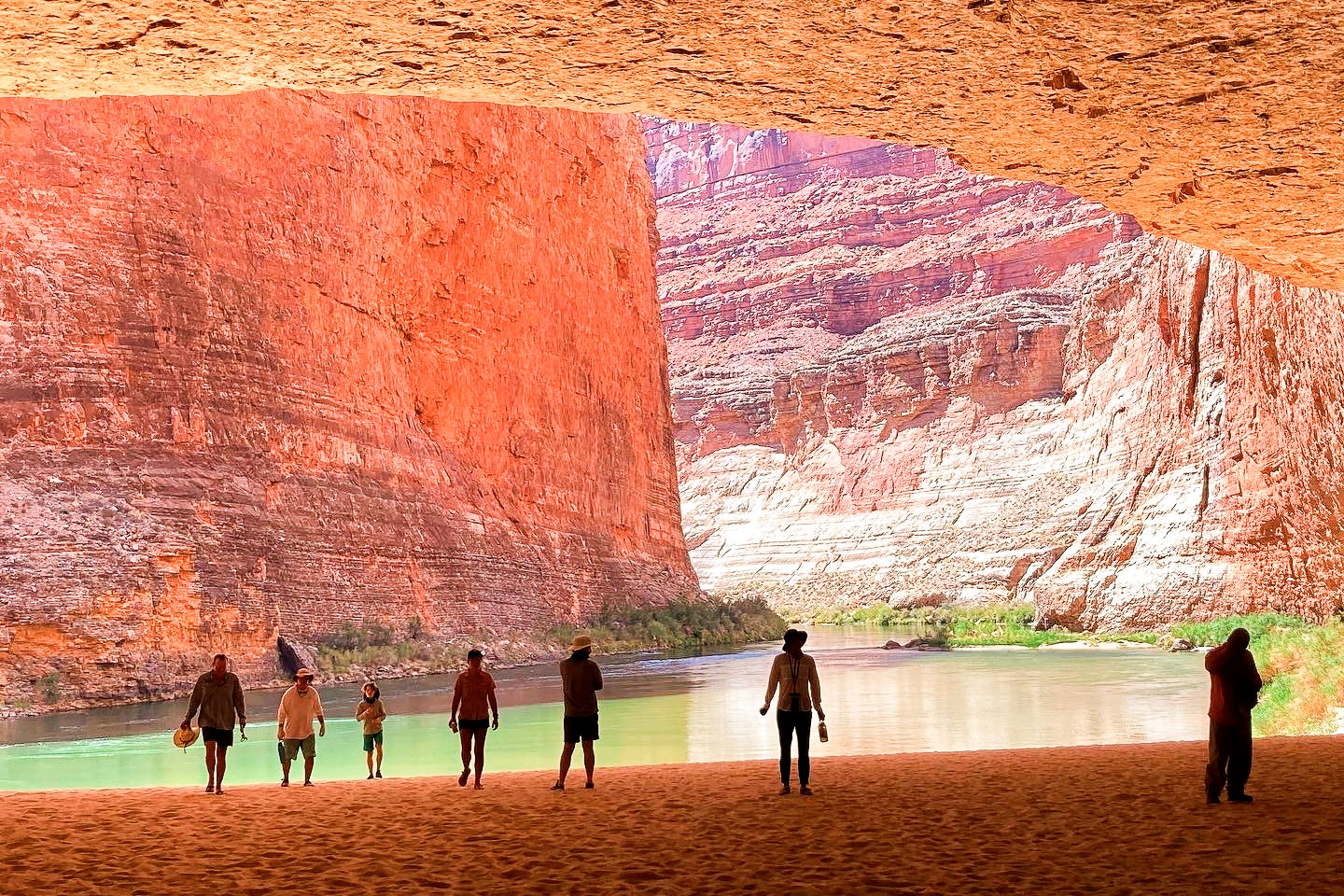
How to survive group dynamics in the Grand Canyon
On my trip, I took to heart this travel truism: every group trip has a jerk, and if you don’t know who it is, then it’s you. On a multi-day adventure trip, where bonding and camaraderie are a fundamental part of the experience, you do not want to be the jerk.
How to avoid this fate? Don’t be late to the raft in the morning, don’t complain too much, don’t barrel to the front of the food line, and always help load and unload the boats.
See hidden waterfalls and breathtaking views on the 17 best hikes in Arizona
Commandeering the same seat at the front of a motorized raft is also frowned upon. Waves crash here with dramatic intensity, making it the prized place to sit. If you’re an adventurous type, remind yourself to rotate to the middle of the raft – dubbed the "Tea Room" on our trip – and let others enjoy the waves at the prow.
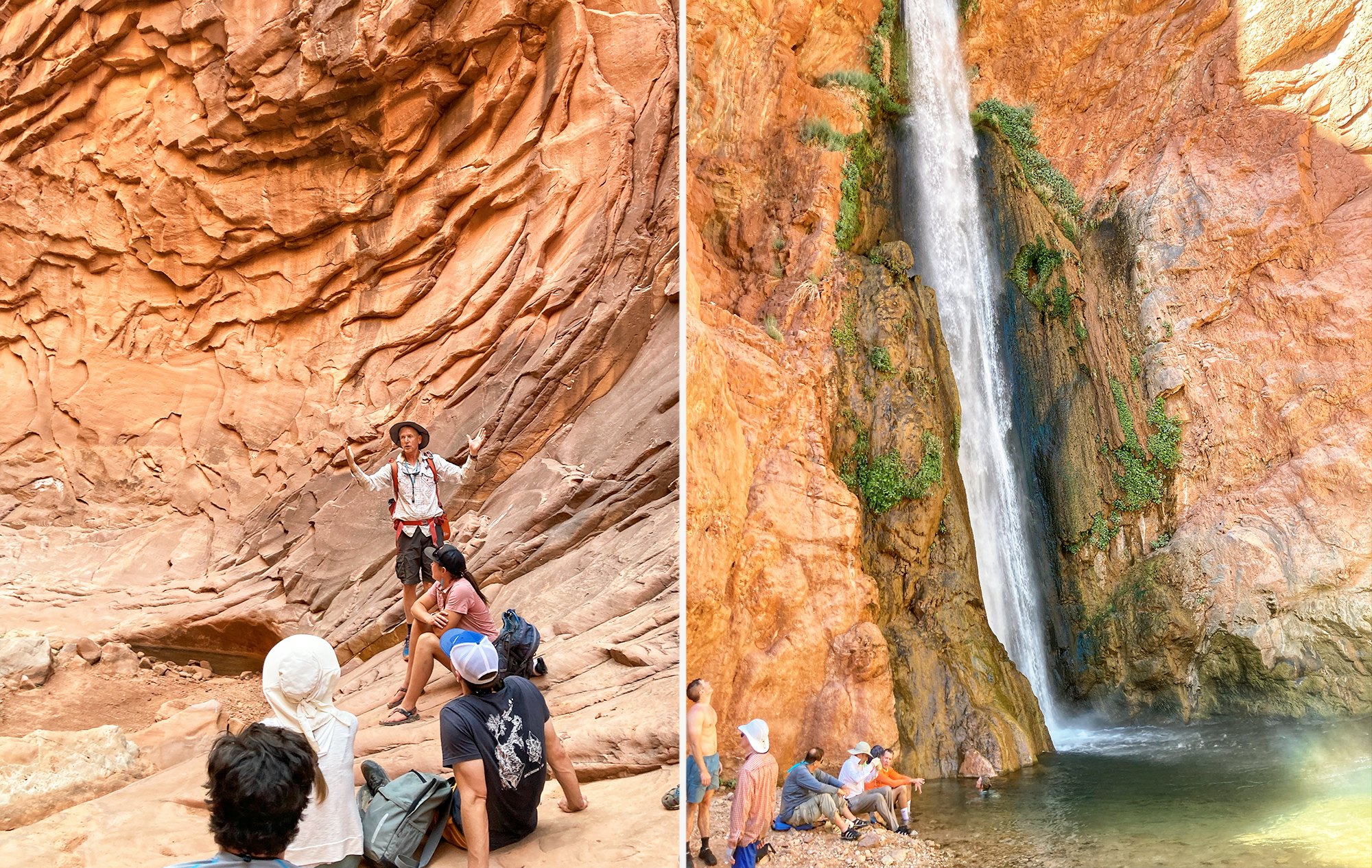
Maximize the adventure and the meaning of your Grand Canyon trip
On a few occasions, I found myself hot, tired and under-enthused about the planned day's hiking, but a fellow traveler responded to my grumblings with just the right mantra: “You can’t do it tomorrow!”
This carpe diem philosophy was spot on, especially on a river trip that was perpetually moving forward, and I’m glad I listened. The hikes all led to memorable sites, from slot canyons and towering waterfalls to fascinating petroglyphs and the mesmerizing turquoise waters of the Little Colorado River.
Remember to listen to your guides when they talk about geology, history and conservation. I’ll never be able to explain the Great Unconformity, but immersing myself in the age and immensity of those gorgeous ancient rocks drove home my place in the universe.
On the last night, our lead river guide reminded us that we were on this Earth for a fleetingly short time. His advice? Make the most of that time by bringing the camaraderie and sense of wonder experienced in Riverworld back into your everyday life.

Boating the Colorado River – how to make it happen
Consider the following factors when choosing a guided trip through the Grand Canyon. Weigh up the number of days you want to be on the river, where you want to start and end your adventure, and the type of boat you’d prefer.
Most companies offer Full Canyon and Half Canyon trips. Half Canyon trips require a hike in or out of the canyon, typically on the 8-mile Bright Angel Trail from the South Rim, to shave off distance. I'd recommend the Full Canyon if you’ve got the time.
When to raft the Grand Canyon
You'll need to reserve a commercial trip a year or more in advance, but check with the various companies to see when they release their reservation calendars. Calendars can be posted up to 14 months before the start of the season.
May and June are the most popular months, according to Grand Canyon Expeditions, whose guides have led trips here since 1964. “I believe it’s because the weather isn’t usually so hot, the river is green, and that’s about the time families are getting out of school,” explained Taylor Lea Pratt, a GCEX reservation specialist.
As noted by Pratt, the Colorado River shimmers a dazzling shade of green in late spring and early summer, because the algae-tinted waters haven't yet been muddied by mountain silt. Similarly, the Little Colorado River, a tributary of the Colorado, is a luminous turquoise in late spring. The monsoon season runs from mid-July through early September, bringing refreshing afternoon rainstorms and the occasional rainbow. Wildflowers bloom in surrounding canyons in early spring, adding bonus color.









